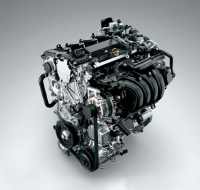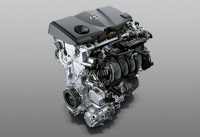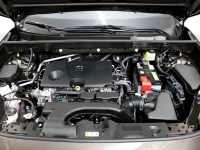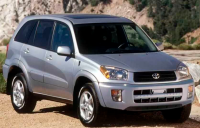Toyota's fifth-generation crossover began appearing in Europe three years ago. It was then that the first test trials of the parketta began. In spring 2018, the model was presented at an exhibition in New York, and six months later it began to appear on European markets.
In the country, the cars began to be supplied with modified petrol engines of the DynamicForce series. These were equipped with a combined fuel injection system, as well as a VVT-iE system mounted on the intake valves of the cylinder head. The DynamicForce engine was first presented to the public in 2016.
Its displacement was 2.5 litres. Subsequent modifications, launched in 2017 and 2018, had displacements of 3.5 litres and 2.0 litres respectively. In total, the manufacturer envisaged a range of six inline-type engines and three with V-shaped cylinders.
Contents
Engine types
Technical specifications
What are the differences between the engines
Construction features
Cylinder block
Crankshaft
Pistons
Type of petrol
Engine advantages
Engine types
Two engine variants are available for domestic customers:
2.0 litre and 149 hp;
2.5 litre with 199 hp.
The first variant of the engine can be fitted on all-wheel drive vehicles as well as front-wheel drive vehicles. Front-wheel drive is combined with a six-speed manual gearbox or variator. Timing belt drive is a chain drive. The hydro-compensators act as automatic gap adjusters, so there is no need for manual timing adjustments.

The 199bhp engine is fitted to all-wheel drive models only. It is paired to an eight-speed automatic transmission. The chain drive also eliminates the need for cycle timing adjustments.

Technical Specifications
The 149hp engine has a factory modification number M20A-FXS:
Cylinder diameter - 80.5 mm;
Piston stroke - 97.6 mm;
Compression Ratio - 14.0;
Torque - 180 N*m;
Cylinder arrangement - transverse;
Injection type - mixed.
What are the differences between the engines
The 199hp engine has a larger bore of 87.5mm and a stroke of 103.4mm. This is the reason for the increased power at the output shaft. Such engines are often used in hybrid powertrains. In Russia, the fifth-generation Rav 4 with electric motors is rather rare. Find such a car in excellent condition is virtually unrealistic.
Design features
Technical solutions applied to the fifth generation engines were developed more than a decade ago. But they still today allow the engine life without the need for repair at the turn of 400-500 thousand kilometres.
Cylinder Block
The design of the block is the same as the open-type cooling jacket. Steel cylinder bushings are pressed into the light-alloy aluminum block, and the inner surface is honed and ground. Aluminium block construction enables efficient heat dissipation with an engine weight 20-25% lower than that of metal blocks. This reduces fuel consumption and maximises power delivery.
The cooling jacket is fitted with a spacer that increases the circulation speed of the antifreeze or fuel oil. This allows the engine to run at the optimum thermal conditions and protects it from overheating even at maximum power.
Crankshaft
A particular design feature is the differential arrangement of the cylinders in relation to the longitudinal axis of the shaft. This design reduces the shock loads in the piston-rod coupling during the ignition phase. The geometry avoids detonation shocks and increases efficiency of the engine as a whole.
Pistons
The piston body is made from cast aluminium and has a T-shaped design. By customising the shape of the trunk, the total weight of the piston set is reduced by around 7%. The grooves in the piston rings have a reinforced coating to protect the piston from wear and thermal damage. The carbon fibre-reinforced DLC coating is applied by flame spraying. The piston skirt is plastic coated. It interacts with the running surface of the sleeve. The piston pins are connected to the connecting rod by alloy snap rings.
The fifth-generation Toyota Rav 4 petrol engines are considered to be fast. Compared to previous versions, the piston speed during combustion has increased by 10%.
Type of petrol
For an engine with a compression ratio of 13, low-octane fuel is used. Such engines are designated in the international classification as "RON 90". But machine owners and dealerships advise you to fill up with petrol with an octane rating of at least 95.
Engine advantages
The fifth-generation engines, as well as previous versions, have gained the trust and respect of motorists and are distinguished by
Long service life. The engine, which is regularly serviced and the replacement of components, is able to run 600-700 thousand kilometres without violation of the characteristics and the appearance of the primary signs of failure;
Traction characteristics. The engines feature equally good "behavior" both on highways and on country roads;
Economy. Gasoline consumption is rather low, according to the published passport data.
And do not forget to subscribe to our Telegram channel for news




